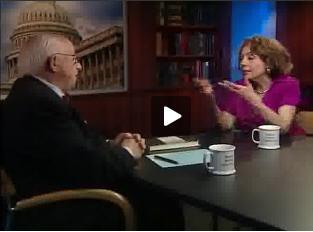SHADOW ELITE - Reviews
Kultura i Edukacja (Culture & Education)
Quarterly 2010, # 5 (79), pp. 261-266.
By Maciej Gurtowski (rev.)
Shadow Elite. How the World's New Power Brokers Undermine Democracy, Government, and the Free Market
Basic Books, New York 2009, pp. 304.
The collapse of communism and Revolutions of 1989 are probably the major problems for western social sciences. Rapid and mainly unexpected transformations have changed the balance of power in the world. The very origins of these processes could be identified in the early 1980s in Poland. While the communistic block was spread over the vast part of Eurasia, from Laba River in Europe to the Mekong in China, there was a country that managed to create a rift in this block – the legal democratic opposition. Janine Wedel was an eyewitness to the beginnings of Solidarity movement and to the attempts of crashing it by introducing the martial law in 1981 followed by the transition of communistic regimes into democratic states. As a social anthropologist, not the political scientist, she observed how Poles were operating around the rules under communism and during its transition. They were skilled conspirators and experienced rule–abiders because of almost two centuries of living under occupation. And because of some historical factors Poles saved their national identity while being skeptical to their state. People living in the police state were forced to deceive the state institutions and such a situation required from citizens a kind of flexible identity. As Wedel stated: "In communist Poland, the necessity of getting around the system bred absurdities, ranging from the employee who "lifts" a desk from state–owned factory to sell for cash and then complains when a fellow worker "steals" it from him, to the employee of the Communist Party headquarters who doubles as an underground publisher, printing his leaflets at the headquarters. While the totalitarian nature of the state necessitated such strategies, America today seems increasingly to off er such absurdities of its own" (p. X). The core idea of the "Shadow elite" is the observation that some important phenomena, apparently typical for communistic and transitional states, are starting to occur also in model democracy such as the United States. What are these phenomena? First of all, let's start from drafting the specific field of research which is the base of Wedel's findings.
We can divide the subject of social sciences into four categories using two methodological criteria: transparency and complexity. Then we achieve the matrix with four types. First, there are transparent and simple phenomena, teenagers dating habits, for example. Second, we've got phenomena that are simple and latent, like the contents of confessions in Catholic congregation. Third, we achieve complex and transparent, in methodological sense, phenomena, for example: macro trends in education. The last category contains the field of exploration which is most challengeable for researchers because of its secrecy and complexity. It includes, for example, revolutions, price–fixing conspiracies, covert actions of secret services, financial scams, terrorist networks activity, etc. Such phenomena are difficult for scientific inquiry because of a few specific obstacles. Radosław Sojak and Daniel Wicenty analyzed such restrictions1 for their conceptualization of the field study they called "behind the scenes dimensions of society"2. Among these specific obstacles two of them are, according to "Shadow Elite", especially worth emphasizing. Firstly, it is uneasy to collect and verify the data about hidden and complex phenomena. Secondly, some clandestine social activity is understandable only in its unique, usually also not available context.
Most of Polish scientific analyses of the transition of former communistic regimes neglect one important, in our opinion, variable3 – the legacy of the police state4. For example, the role of communist secret services and nomenklatura in designing and managing the transition, or the problem of the so called "early winners" of the transition are still, in respect to its importance, unexplored5. Janine Wedel is the one of the few who analyzed this neglected dimension of postcommunist transitions6. In her previous book7, she wrote about the observed in transition democracies processes of blurring the border between the public and the private, and about the abuses of western reform advisors. What is most important here is the fact that aft er almost a decade, Wedel discovered similar phenomena in so called mature democracies. It is an effect of the well–known mechanism of a hermeneutic circle.
Wedel's book is about insidious threats to modern market democracies. Who are the members of the shadow elite and how do they "undermine democracy, government and free market"? Wedel calls "the new breed of influencers 'flexians'. When such operators work together in longstanding groups, thus multiplying their influence, they are flex nets. Flexians and fl ex nets operate at one extreme of a continuum in crafting their coincidences of interests" (p. 5). They "operate at the nexus of official and private power, cannot only co–opt public policy agendas, crafting policy with their own purposes in mind. They test the time honored principles of both the canons of accountability of the modern state and the codes of competition of free market" (p. 7). Flexians intentionally locate themselves in situations of coincidences of interests because it brings them more influence. It's not just a simple profit as in classic conflict of interest. Usually, they try not to simply enrich themselves but rather to take control over some part of public policy in intention to protect some idea or they simply promote themselves. According to flexians, terms like "corruption" and "lobbing" are not applicable. Anti–corruption regulations cause new sophisticated methods of bypassing them. Comparing to flexians, double agents, as Wedel stated, are simple creatures. Flexians usually combine, at the same time, positions: academic, advisory, journalistic, commercial and public. So it is hard to track their loyalties and to simply answer: "who do they serve?" because their various conflicting agendas allow them to avoid accountability. Coincidences of interests comparing to conflicts of interests are uneasy to detect.
According to Wedel, this new international class of influencers emerge as a cause of four transformational developments which occurred over the last quarter of century: government outsourcing and deregulation, the end of the Cold War, the growth of information technologies, and "the embrace of truthiness". The first three of them are literally understandable but the last one needs a comment. Truthiness is a concept of Stephen Colbert, and the easiest way to explain its meaning is by comparison to Baudrillard's term "simulacra": "Simulation, unlike pretense, and like "truthiness", produces real intuitive feelings, emotions or symptoms in someone, and, therefore, blurs the difference between the ‘real' and ‘imaginary'" (p. 219). Truth needs a proof and "truthinees" thrives on impressions. "Truthiness" allow flexians to hide their complex conflicting agendas behind the mask of the currently performing role. So it is hard for the media or the public opinion to recognize the flexian and their flex net. Wedel emphasizes that the media no longer control public authorities. Instead, the media enhance politicians to entertain the audience. Public servants could easier conceal their private interests.
How do flexians and flex nets work? Wedel enumerates their most important features (pp. 15–19). First is "personalizing bureaucracy", which means that flexians use informal relationships to affect formal institutions. Flexians are loyal to people not to organizations or institutions. Second, "privatizing information while branding conviction" with "shared conviction and action" – flex nets are capturing the information available only to insiders and their members get a similar worldview. Third, "jiggling roles and representations", which is simply representing simultaneously different and sometimes competitive interests. Fourth, "relaxing rules at interstices of official and private institutions", which is literally clear but it needs to be emphasized that this relaxing is achieved by constantly "almost breaking" a given rule a little more.
Concepts of flexians and flex nets are used by Wedel for explaining some apparently irrational decisions of the US Government. Wedel argues that flexians captured important links in decision making processes. For example, saving bankrupting banks with public money has been, until recently, unthinkable. But, as she proves, influence of flexians has blurred the border between the public and the private and between bureaucracy and the market.
Wedel's concepts are illustrated by four case studies. The first is about post–Communist transition in Poland. The author shows how some flexian–like individuals connected with authorities of the former system together achieved enormous success during and aft er transformation. Wedel describes the example of institutionalization of a flex net. She argues that Ordynacka Association (students association in the beginning) was an attempt to organize a formal flex net with intention of creating background for informal influence. According to Wedel, the effect of that enterprise was the Rywingate – considered a major Polish political affair that in consequence totally reshaped political balance in Poland.
Another case is an analysis of the process of the US government outsourcing and deregulation. Wedel argues that instead of budget's savings and limitation of bureaucracy, outsourcing brings to former governments' contractors exclusive knowledge and other useful resources.
The third case study is about Russian industry privatization. Wedel describes how western privatization advisors, mainly economists and managers from Harvard, mixed their liberal and free–market ideas with local, post–communist management culture, which resulted in ruination of Russian industry. But a more interesting discovery is that western advisors brought back to America the Russian way of doing business with no respect to the rules and private property.
The fourth case is of American Neoconservatives. According to Wedel, they create a flex net whose aim was to protect the world from repetition of holocaust. The author argues that "Neocons" captured a vast part of governmental administration to the level which allowed them to force the invasion on Iraq. Consider the example of their impact: Lawrence B. Wilkerson, the Chief of the Staff said about Neocons to the Secretary of State, Colin Powell, from 2002 to 2005: "We were up against a ruthless machine that had its people in every corner of the bureaucracy, with a vision and strategy for carrying out the vision" (p. 177). It is also interesting that, according to Wedel's findings, Neocons' flex net, like Ordynacka, is also responsible for a huge political affair – the well–known Iran–Contras.
Is it possible that in an established state, a small group of individuals is able to influence the major institutions of the state for a long time? How do they do that? Janine Wedel is not the first who analyzes such phenomena. She directly quotes theories of Polish sociologists: Antoni Kamiński, Joanna Kurczewska and Adam Podgórecki. The first two of them are authors of the concept of "institutional nomads"8, actors similar to flexions, and Podgórecki9 conceptualized the phenomenon of capturing some functions of institution by hidden net of individuals.
In her book Wedel explored complex and clandestine phenomena and as a social anthropologist she has got an excellent background for uncovering the hidden meanings of social activity. Moreover, she has not only spent years on analyzing informal institutions and social networks in Central and Eastern Europe but she has also been a participant in Moscow meetings of privatization advisors. Wedel used the data collected by participant observations and by interviews with insiders. We can surely agree that Wedel has overcome the obstacles mentioned in the beginning, the access to hidden data and its unavailable context. She has just used well documented examples.
In "Shadow Elite", there is no systematic theoretical background. Wedel uses different ideas from classic and modern scholars in an easy manner. The reasoning is sometimes not clear mainly because of the sophisticated narration and non–intuitive terminology. The theses are oft en too strong for the argumentation. But there is still a wealth of evidence. Wedel manages rather to impress the reader than to prove her theses. Some ideas of Wedel are surely brilliant. She states important questions and off ers original answers. What makes Wedel's book so valuable is that it also contains useful heuristics for other researchers.
___________
1 R. Sojak, D. Wicenty, Zagubiona rzeczywistość.
O społecznym konstruowaniu niewiedzy
[A Lost Reality. On Social Costructing of Ignorance],
Warszawa 2005, pp. 173–219.
2 Ibidem, pp. 21–66.
3 Ibidem, pp. 199, 223.
4 M. Łoś, A. Zybertowicz, Privatizing the Police–State: The Case of Poland, London–New York
2000.
5 A. Zybertowicz, Hidden Actors, Overlooked
Dimensions and Blind Intellectuals: Nine Paradoxes
that Account for Institutionally Entrenched
Ignorance [in:] Building Democracy and Civil Society,
S. Eliaeson (ed.), London–New York 2006,
pp. 226–37.
6 See also: D. Stark, Recombinant Property in
East European Capitalism, "The American Journal
of Sociology" 1996, Vol. 101, No. 4, pp. 993–1027;
J. S. Hellman, Winners Take All: The Politics of
Partial Reform in Postcommunist Transitions,
"World Politics" 1998, Vol. 50, pp. 203–34.
7 J. Wedel, Collision and Collusion. The Strange
Case of Western Aid to Eastern Europe, New
York 2001.
8 A. Kamiński, J. Kurczewska, Main Actors
of Transformation: The Nomadic Elites [in:] The
General Outlines of Transformation, E. Allardt,
W. Wesołowski (eds.), Warszawa 1994, pp. 132–53.
9 A. Podgórecki, Social Control of the Th ird
Order, "International Journal of Contemporary
Sociology" 1986, Vol. 23, No. 3–4. For most advanced
sociological conceptualization of social
arrangement which capture state institutions see:
A. Zybertowicz, Przemoc Układu: O peerelowskich
korzeniach sieci biznesowej Zygmunta Solorza
[Violence of the Arrangement: On the PRL (Polish
People's Republic) Roots of Zygmunt Solorz's
Business Network] [in:] Transformacja podszyta
przemocą: O nieformalnych mechanizmach przemian
[Transformation Streaked with Violence:
On Informal Mechanisms of Transformations]
R. Sojak, A. Zybertowicz (eds.), Toruń 2008, pp.
187–266.
Original at Kultura i Edukacja, pp. 261–266.









